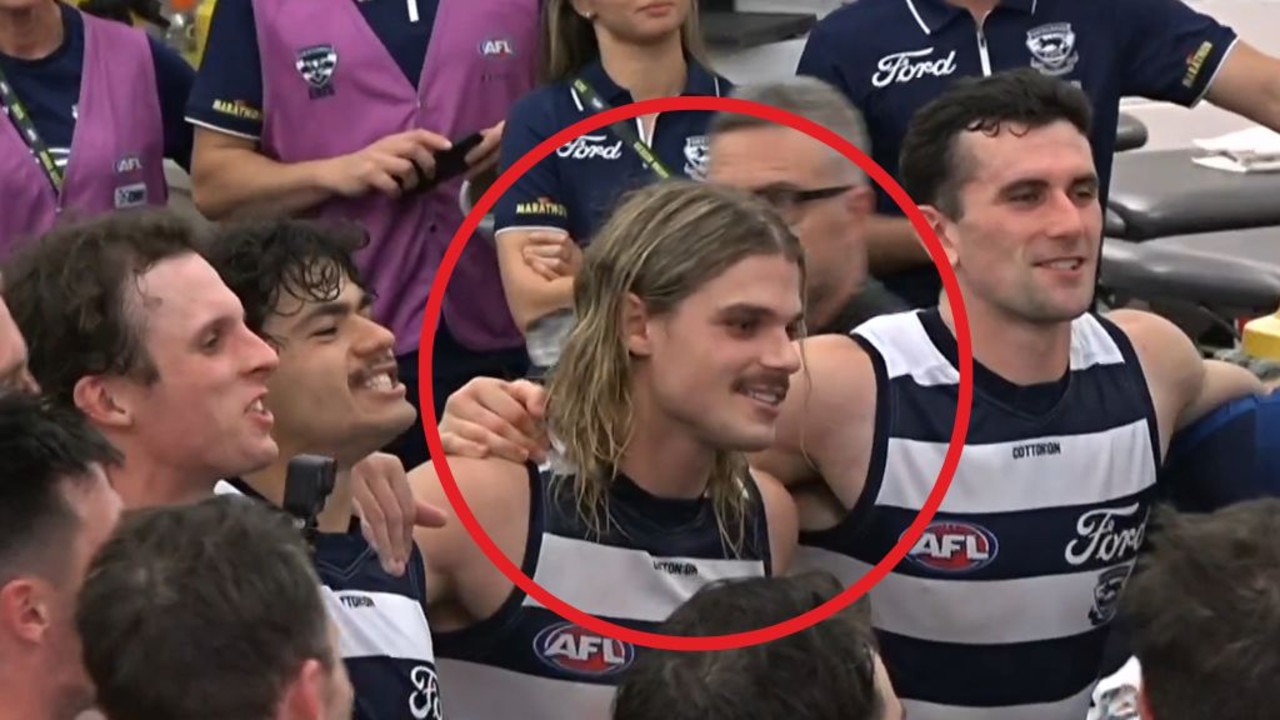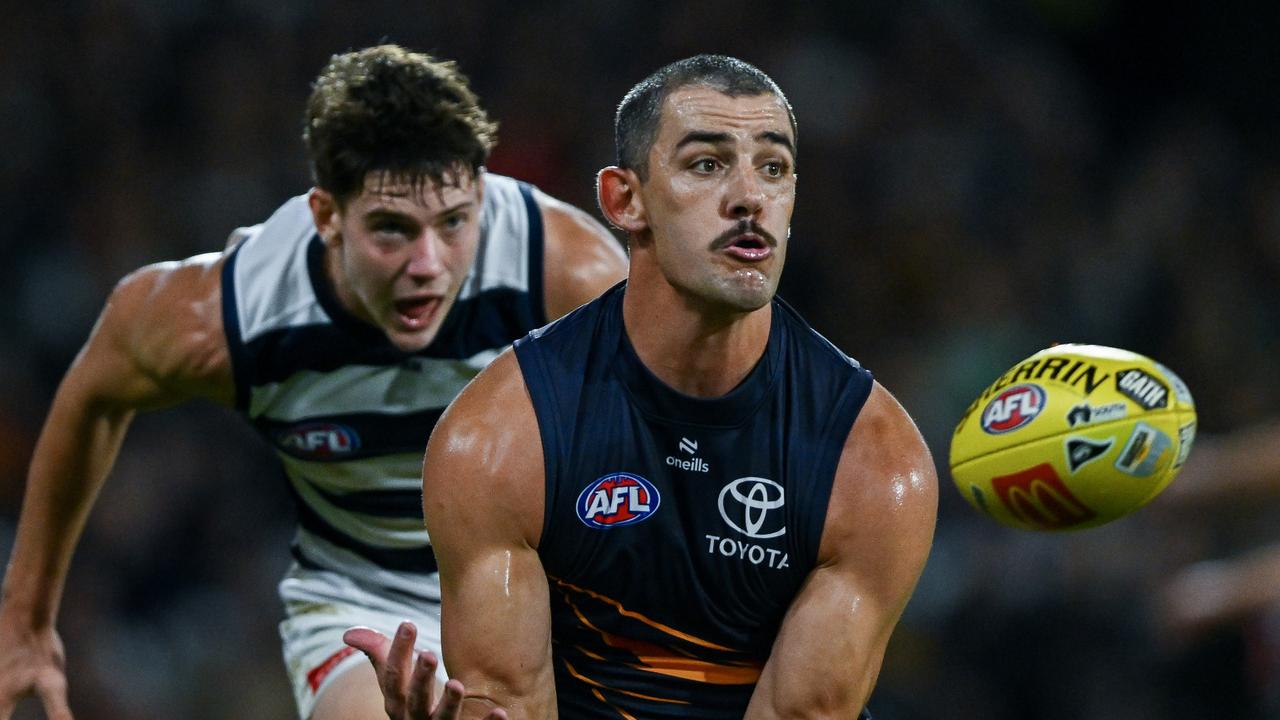The truth about third party deals, protected sponsors and additional service agreements in the AFL
In some cases, AFL players are losing thousands to make millions down the line. From paid social posts to third-party deals and the big names protected by the league, here’s how it all works.
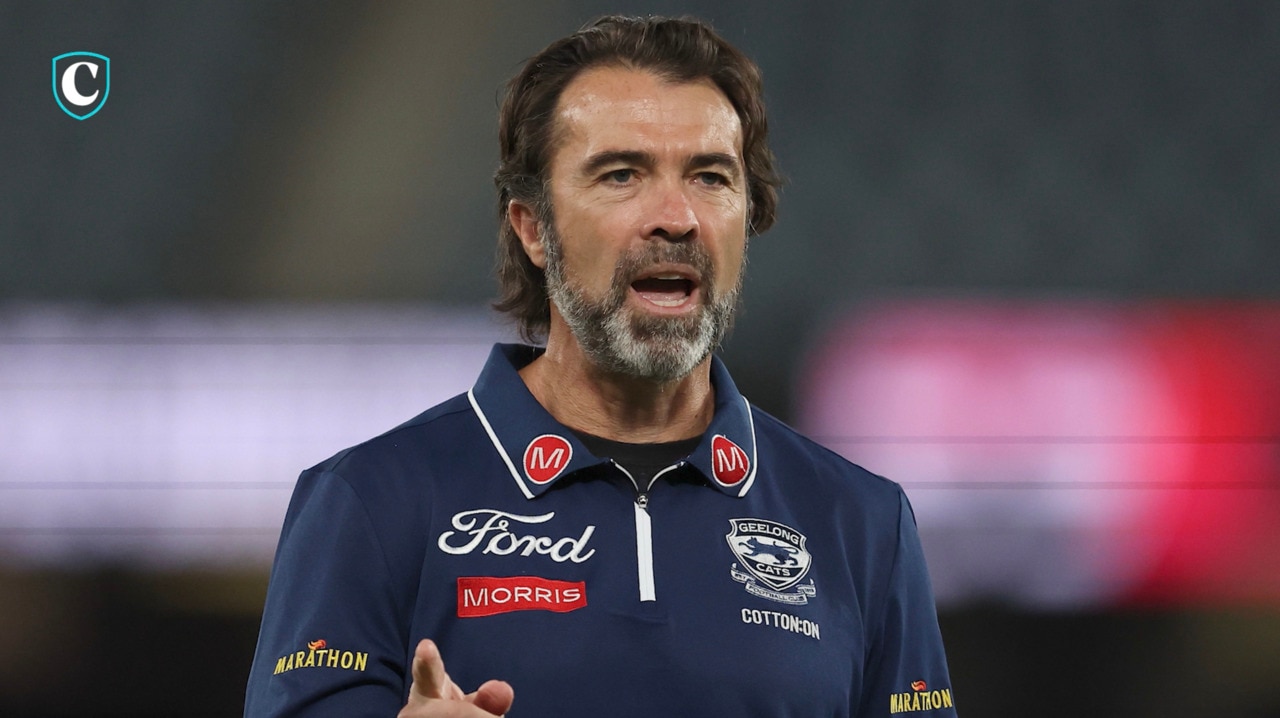
AFL News
Don't miss out on the headlines from AFL News. Followed categories will be added to My News.
A small detail front and centre at Ken Hinkley press conferences can unlock the intricate and sometimes confounding maze of sponsorships in the AFL.
When Hinkley pops down to face the firing squad of media questions after each match, this year a Port Adelaide media member has dropped a yellow football bearing a Telstra logo in front of the coach.
The ball isn’t placed there because Hinkley loves night footy and Telstra’s nationwide coverage, but the Power have an agreement with the AFL that the coach doesn’t have to sit behind a ball bearing a McDonalds logo, like most other clubs.
Look closer and you will see the red KFC logo on the sponsor banner behind Hinkley.
The fried chicken joint is a major enough sponsor to break through McDonalds’ protected sponsor rule over most clubs, in which a brand that partners with the league can block out competitors.
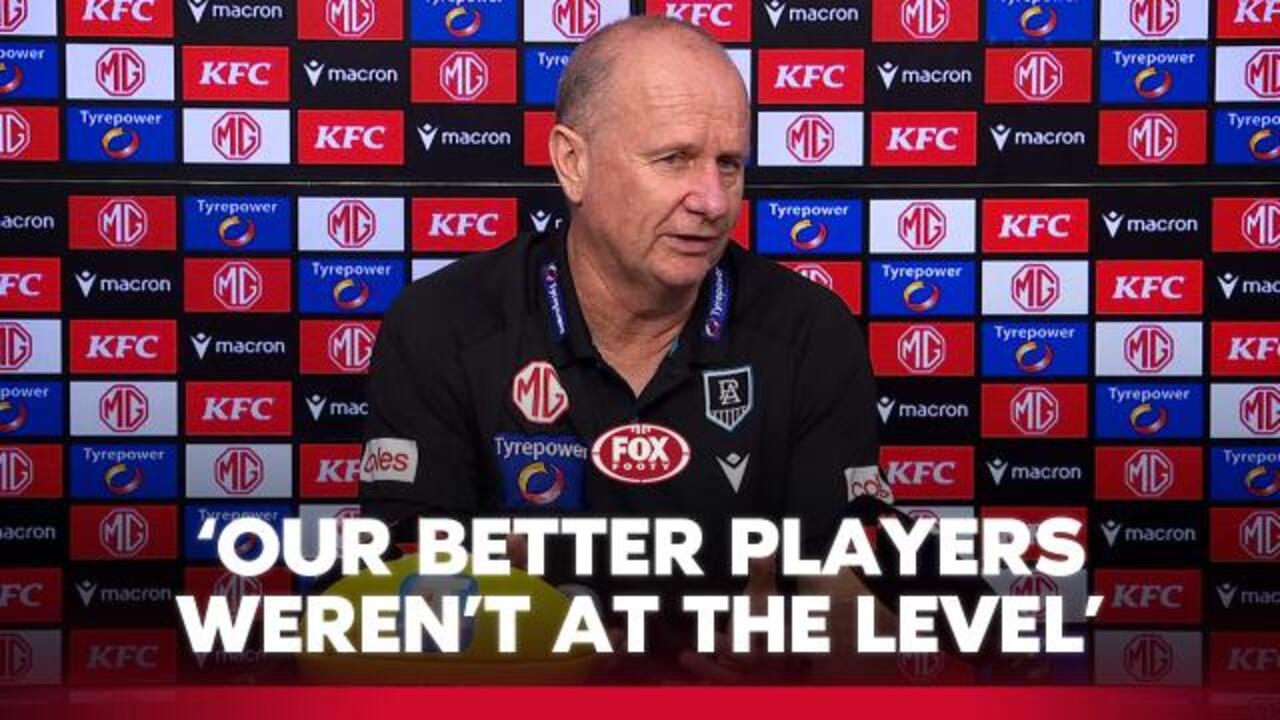
But if a rival, like KFC to Maccas, pays a club enough, the AFL will exempt part of the protection of its own sponsor, and in the case of Hinkley’s conferences, the KFC payment to the club is enough to boot out the Maccas ball.
Basically, everyone is happy to get more money into the game.
West Coast’s iconic partnership with Hungry Jacks also means coach Andrew McQualter sits behind a footy with a Telstra logo.
In round 1, Hinkley sat in front of his yellow ball while Collingwood counterpart Craig McRae talked from behind a red footy bearing the McDonalds logo.
That was despite the Pies coach also having the KFC logo behind him on the Collingwood sponsors board.
But the KFC value to the Pies wasn’t enough to shift the kids-sized replica Sherrin.
The varying exemptions buried deep in the rules around revenue comingin to the pockets of the league, mean those rules all can be bent when it comes to money.
CRASHING THE THIRD PARTY
Geelong has been under the microscope for third party agreements this year but they are completely legal, as long as the AFL signs off on it.
So for example, Chris Scott is free to work with Geelong sponsor Morris Finance, as long a the AFL ticks off that it is a “bona fide” job.
Where Scott and the Cats landed in hot water earlier this year was the use of a club polo in promoting the partnership.
Players or coaches are not allowed to do promotional material that includes club logos, otherwise it would likely be deemed an Additional Services Agreement (ASA) event – more on that later.
Melbourne star Christian Petracca toed this line perfectly recently, appearing in a Dees promo shoot in club colours to announce the signing of yoghurt company YoPro as a sponsor.
At other times he has hawked the same brand on his personal social media pages, but when doing that he has been in casual clothing.
Essendon ruck-forward Sam Draper is another example.
He is an ambassador for Tradie beer, which is also the shorts sponsor of the Bombers.
Anytime he promotes Tradie for himself, he would have to be wearing casual clothes, and if he does sponsorship work for Tradie on behalf of the Bombers, he can wear club gear.
If a player does some Instagram work with a brand not linked to their club, they don’t have to tick it off with the AFL, but again they must not wear club colours.
AFL sponsors can come over the top though.
The league often lets clubs know they are using the player for their own needs, then a player agent will also contact a club for marketing work that isn’t a third party or ASA deal.

THE ASA QUESTION
One club describes the ASA system as like a gift voucher for using players.
Each club can spend $1,267,304 on ASA work per year and the clubs can cash it in to promote sponsors.
This cash sits outside of the salary cap but is carefully marked by the AFL.
When a club organises promotion for a club sponsor, like a photo shoot or some video work or an appearance at a sponsor’s event, they can pick a player from their designated ASA list – both AFL and AFLW players are counted – and they get paid for that.
Most clubs have between eight and 12 players on the designated list.
Recently Collingwood announced a new partnership with the National Heavy Vehicle Regulator, launching it publicly with help from premiership players Josh Daicos and Jack Crisp.
It is likely the pair had that launch ticked off as an ASA appearance, in which they would have been paid to be there out of their annual ASA allotment.
St Kilda similarly posted a video of Bradley Hill racing against a Chery car while in Saints training gear.
The players generally have a set amount expected to be paid to them each year and each appearance draws down on that, for example, a player may have $50,000 in their contract for ASA work and one appearance could equal $2000.
Clubs keep track of each player usage and have to balance out when to use certain players – for example using up the captain’s gift voucher early in the season means you may not have him available if a big sponsor wants to launch something.
And every sponsor wants the biggest stars.
One club described ASA work as players handing over their own image to the sponsors and getting paid for that.
Given it is in their contract to do that work, the players rarely say no.
But a recent change to tax rules means that ASA work is now taxed the same as regular player salaries, so the incentive to do the sponsorship work is now reduced for players.
Often fans will notice the same faces are always used in promo shoots for sponsors because the clubs draw down on a select group of designated stars.
Like with everything else, the ASA world can get murkier with personal player agreements.
Club skippers and superstars Patrick Dangerfield, Patrick Cripps and Marcus Bontempelli are all Nike ambassadors but their clubs are linked to different clothing companies (Cotton On for Geelong, Puma at Carlton and Asics for the Western Bulldogs).
Star players at that level generally understand when they wear club gear they are working for their club and happy to do promotional work for the team sponsor, but when they are in casual clothes they can pose up for their own sponsor, like Nike.
Some clubs were confused when a recent report stated that St Kilda was working through a favourable home loan as part of a monster offer to Giant Finn Callaghan under the ASA.
That wouldn’t have worked under the rules because it wouldn’t have been an appearance, would have tested St Kilda’s yearly budget and the Saints don’t have a sponsor on board to facilitate a home loan.

THE PROTECTED SPONSOR DEAL
Former Blue and Lion Mitch Robinson believes players are leaving thousands of dollars in endorsements on the table during their career because of protected sponsorships.
Certainly that happens to some star players.
Robinson bemoaned after he retired that car and fast food deals were so often left on the table for players because of protections at league and club level.
One veteran star once had a deal lined up that would have paid him $20,000 for an ad campaign with Woolworths, only for that to be squashed because there was a separate league deal in place with Coles.
The AFL allows high paying sponsors in their own category of business – think Toyota, NAB, McDonalds or Telstra – to stand above others and limits players or clubs from doing promotional work for competitors.
But like with most of these rules, there are exemptions.
It’s understood clubs are able to take on competitors, like car sponsorships rivalling Toyota, if they provide the club with enough money.
The exact figure is kept confidential but industry figures said it started at $750,000.
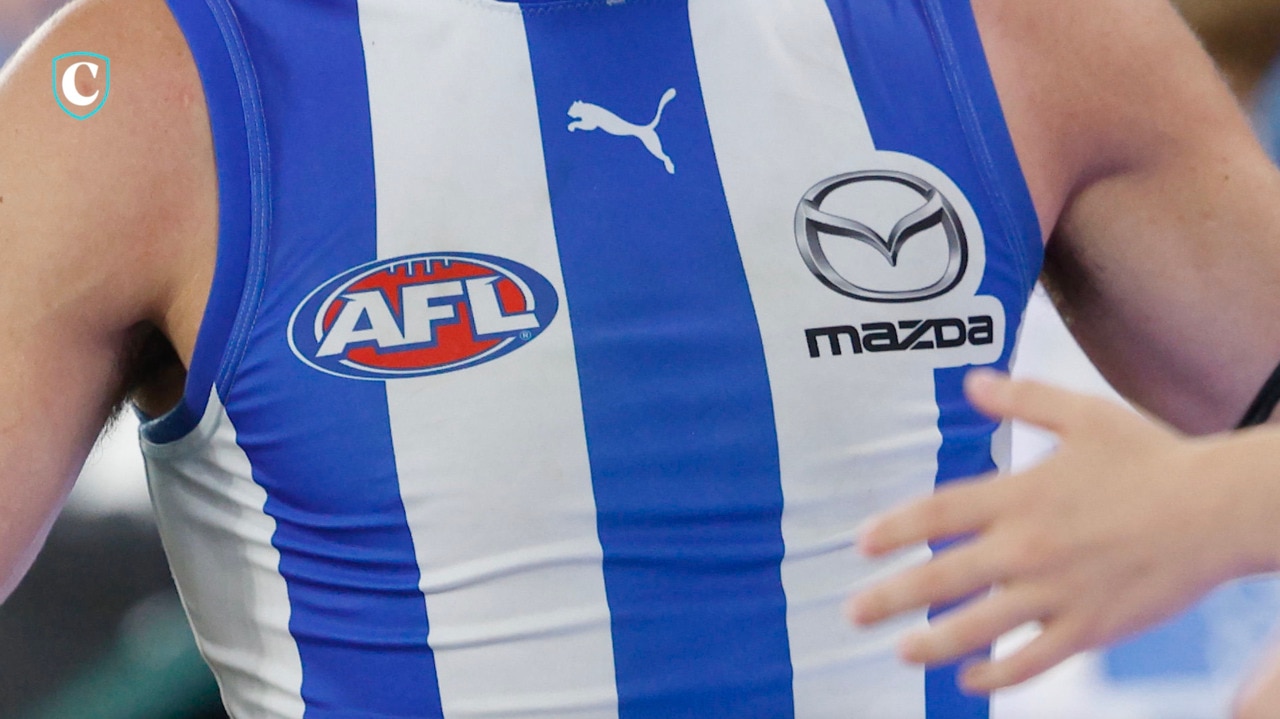
Geelong’s partnership with major sponsor Ford has hit 100 years in 2025 and understandably, the Cats have more leeway on work promoting Ford.
Clubs can also sign up their own protected partners.
A midfield gun at one club once lined up a deal that would have paid him almost $50,000 with an insurer, only to find out the ink had just dried on a deal between his club and a direct competitor.
While some players and player managers run into frustration with protected sponsors, most understand that it can just be the result of doing business and it is just one of football’s many swings and roundabouts.
From the money that a sponsor like Toyota pumps into the game, the players get more than 30 per cent as a share of revenue in the game, and the sponsors pump more cash in for the right to be protected.
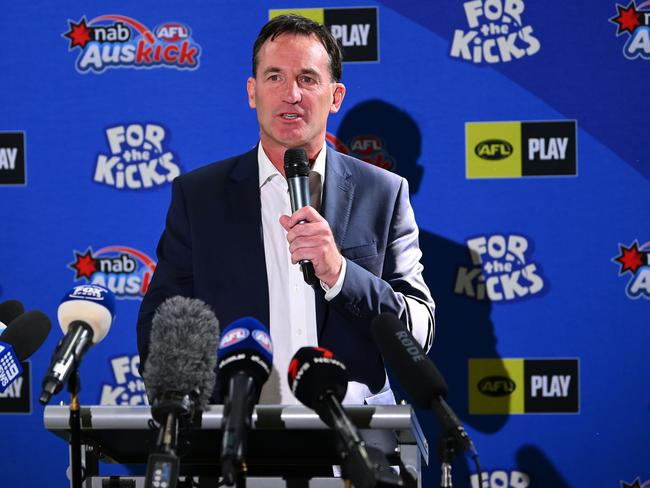
Players swamped Instagram on five different occasions last year putting up Telstra themed posts, nearly all at the same time.
One player management source said the kickback for posts was $750 each.
On rough calculation, if 800 players on club lists each put out five posts, Telstra would have forked out $3m to players.
The lack of sponsor competition can literally impact the on-field product at games.
Because NAB’s long-running sponsorship of the Auskick means they essentially own half-time at all football matches, clubs are wary not to hold any rival bank activations during the main break, and on field promotion is severely limited.
For example, a bank sponsored competition where fans kick the ball at goal would not happen during the main break.
THE NEW FUND
The next wave of money coming into the game this year is thanks to the Marketing Fund.
Between 50 and 80 players, of which at least eight must be AFLW players, will be picked out as the biggest faces in the game and signed up to gold band promotion.
The players were picked out by an independent company based on their on-field achievements, demand from sponsors and social media reach.
The AFL hands will hand over $6.9m to the players to use for this fund, which is essentially set out for growing the game.
The AFLPA will keep a close eye on who gets the best slices from this pie, so the top handful of superstars don’t suck up the entire fund.
Any leftover money from this fund goes back to the players to be shared out at the end of the year.
Originally published as The truth about third party deals, protected sponsors and additional service agreements in the AFL


